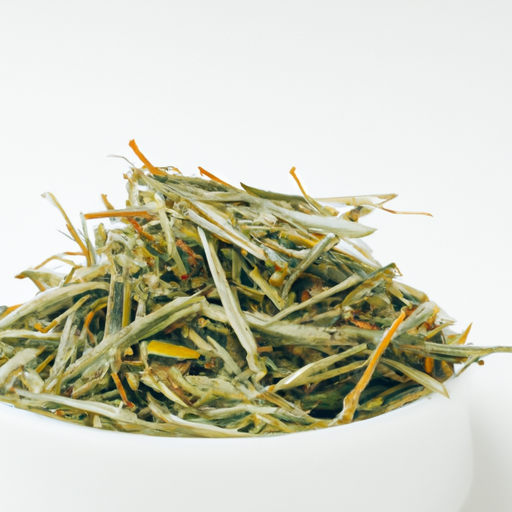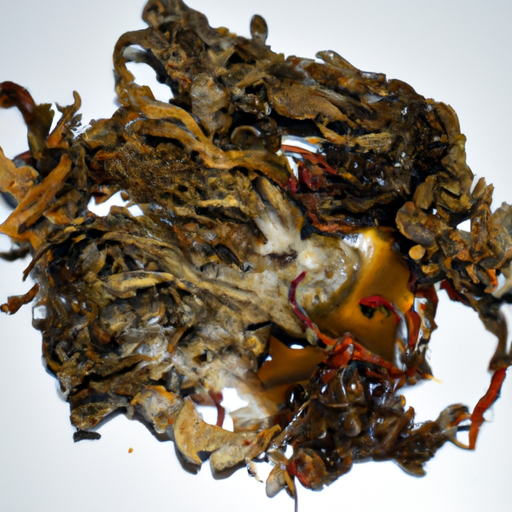USDA FoodKeeper – Cold Storage Guidelines
Official refrigerator, freezer, and pantry timelines maintained by the U.S. Department of Agriculture.
Visit USDA FoodKeeperDiscover the effervescent world of Jun Tea, a delightful cousin of kombucha that’s brewed with green tea and honey. With a refreshing flavor and a low-risk profile, this unique beverage thrives in your fridge for up to 14 days, and you'll still enjoy it safely for five days after its date. Just remember to keep it chilled to savor every bubbly sip!
30 most common foods with instant answers. Print it and stick it on your fridge—completely free! Want more? Upgrade to the complete guide with 70+ foods.
"Jun tea should be stored in the refrigerator at 40°F or below and consumed within 7-10 days for optimal quality and safety, according to USDA recommendations."


Fridge
35-40°F (2-4°C)
Store in glass bottle with tight seal, leave 1-inch headspace
14 days
Mold on surface, vinegar-like smell, excessive fizz, off taste
Salad dressing base
Kombucha, green tea
Jun tea does not have a strict expiration date like perishable foods. Instead, it is best to consume Jun tea within a reasonable timeframe to enjoy its optimal flavor and benefits. The 'best quality' period for Jun tea is typically within 1-2 weeks after fermentation. During this time, Jun tea is at its peak flavor profile and probiotic content. After this period, the taste may start to change, and the probiotic count may decrease. While Jun tea may still be safe to consume beyond this timeframe, it may not offer the same level of quality in terms of taste and health benefits.
To determine if Jun Tea has gone bad, check for any mold growth on the surface, a strong unpleasant odor, or a slimy or off texture. If you notice any of these signs, it's best to discard the Jun Tea to avoid any potential health risks.
Jun tea, like other fermented beverages, may pose a risk of foodborne illness if not properly brewed and stored. As with any fermentation process, there is a risk of harmful bacteria growth if the brewing vessel or equipment is not properly sanitized. It is crucial to maintain strict hygiene practices when making Jun tea to prevent contamination. Additionally, improper storage of Jun tea after fermentation can lead to spoilage and potential foodborne illness. It is important to store Jun tea in a clean, airtight container in the refrigerator to slow down the fermentation process and prevent the growth of harmful bacteria.
To ensure the longevity and quality of Jun tea, it is recommended to store it in a glass container with a tight-fitting lid in the refrigerator. Avoid storing Jun tea in metal or plastic containers, as they may affect the taste and quality of the beverage. It is also important to keep Jun tea away from direct sunlight and strong odors to prevent flavor contamination. If you prefer a fizzy Jun tea, you can transfer it to a sealed bottle after fermentation and allow it to carbonate at room temperature for a day or two before refrigerating. Remember to burp the bottle periodically to release excess carbonation and prevent explosions.
Jun tea is a fermented beverage that originated in Tibet and is often referred to as the 'Champagne of Kombucha' due to its lighter and smoother taste compared to traditional kombucha. It is traditionally made with green tea and honey, giving it a unique flavor profile that sets it apart from other fermented teas. In Tibetan culture, Jun tea is considered a sacred and health-promoting drink that symbolizes purity and vitality. It is often consumed during religious ceremonies and celebrations as a symbol of well-being and prosperity.
Once opened, Jun Tea can be consumed within 5 days if stored in the fridge at a consistent temperature. It's best to seal the container tightly after each use to maintain freshness and prevent contamination.
If Jun Tea has been at room temperature for a few hours, it should still be safe to consume within the 14-day shelf life. However, prolonged exposure to higher temperatures may impact its quality. Always do a sensory check for any off-putting smells, flavors, or visible changes before consuming.
The type of container can influence the shelf life of Jun Tea. Opt for glass or food-grade stainless steel containers with airtight seals to maintain freshness. Plastic containers may absorb odors and affect the taste over time. Ensure the container is clean and dry before storing Jun Tea to prevent contamination.
It's best to store Jun Tea away from strong-smelling foods or beverages to prevent flavor transfer. Avoid placing it near items like onions, garlic, or dairy products, as they can affect the taste of Jun Tea. Store it separately in the fridge to maintain its unique flavor profile.
Freezing Jun Tea is not recommended, as it can alter the live culture and affect the taste and quality. Freezing may cause separation and texture changes when thawed, impacting the overall drinking experience. It's best to consume Jun Tea fresh within its recommended shelf life for optimal flavor.
While most Jun Tea brands adhere to a 14-day shelf life when stored properly, variations may exist based on production methods and ingredients used. Always check the expiration date on the packaging and follow any specific storage instructions provided by the brand to ensure freshness and quality.
The brewing temperature of Jun Tea can impact its fermentation process and shelf life. Brewing at higher temperatures may accelerate fermentation, leading to a shorter shelf life. Conversely, brewing at lower temperatures could prolong the fermentation process, extending the drink's expiration date. Follow recommended brewing guidelines for optimal results.
Jun Tea may have a slightly longer shelf life in cooler temperatures, such as winter, due to slower fermentation rates. In contrast, warmer temperatures, like in summer, can speed up fermentation and potentially shorten the drink's expiration date. Store Jun Tea in a consistent cool environment to maintain its quality and freshness.
When transporting Jun Tea, use a well-sealed container to prevent leaks and maintain temperature consistency. If traveling for a few hours, consider using a cooler bag with ice packs to keep the Jun Tea chilled. Avoid exposing it to direct sunlight or extreme heat during transit to preserve its quality.
30 most common foods with instant answers. Print it and stick it on your fridge—completely free! Want more? Upgrade to the complete guide with 70+ foods.
Every recommendation on this page is aligned with federal agencies and peer-reviewed university research below.
Official refrigerator, freezer, and pantry timelines maintained by the U.S. Department of Agriculture.
Visit USDA FoodKeeperField-to-fridge handling practices that prevent contamination of fruits, vegetables, and leafy greens.
Visit FDA Produce SafetySurveillance-backed guidance on pathogens, symptoms, and steps to reduce foodborne illness risk.
Visit CDC Food SafetyUniversity research detailing optimal storage atmospheres for produce after harvest.
Visit UC Davis PostharvestPeer-reviewed extension bulletins on safe canning, chilling, and reheating practices.
Visit Penn State ExtensionNeed deeper reading? Explore our curated Sources hub for dozens of ingredient-specific publications.
Scan your food directly and get instant safety info using our AI-powered camera feature.
We have recipes that can help you safely use jun tea past its expiration date!
View Recipes →Ready-to-Eat Meals
View expiration date and storage guide →
Fruits & Vegetables
View expiration date and storage guide →
Herbs and Fresh Produce
View expiration date and storage guide →
Cooking Ingredients
View expiration date and storage guide →
Fruits & Vegetables
View expiration date and storage guide →
Meat & Poultry
View expiration date and storage guide →
Dairy Products
View expiration date and storage guide →
Breakfast Foods
View expiration date and storage guide →
Dairy Products
View expiration date and storage guide →
Important: These are general guidelines based on authoritative sources listed above. Always use your best judgment and when in doubt, throw it out. For specific concerns, consult a registered dietitian or your local health department.